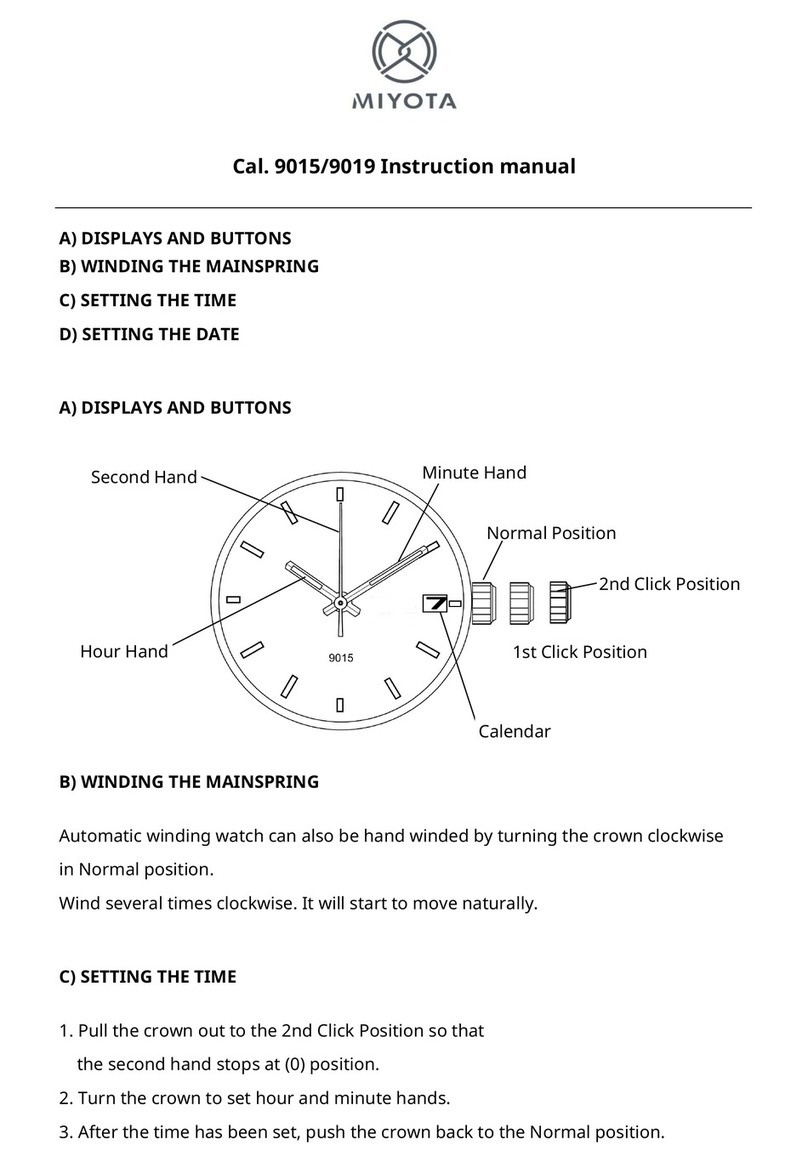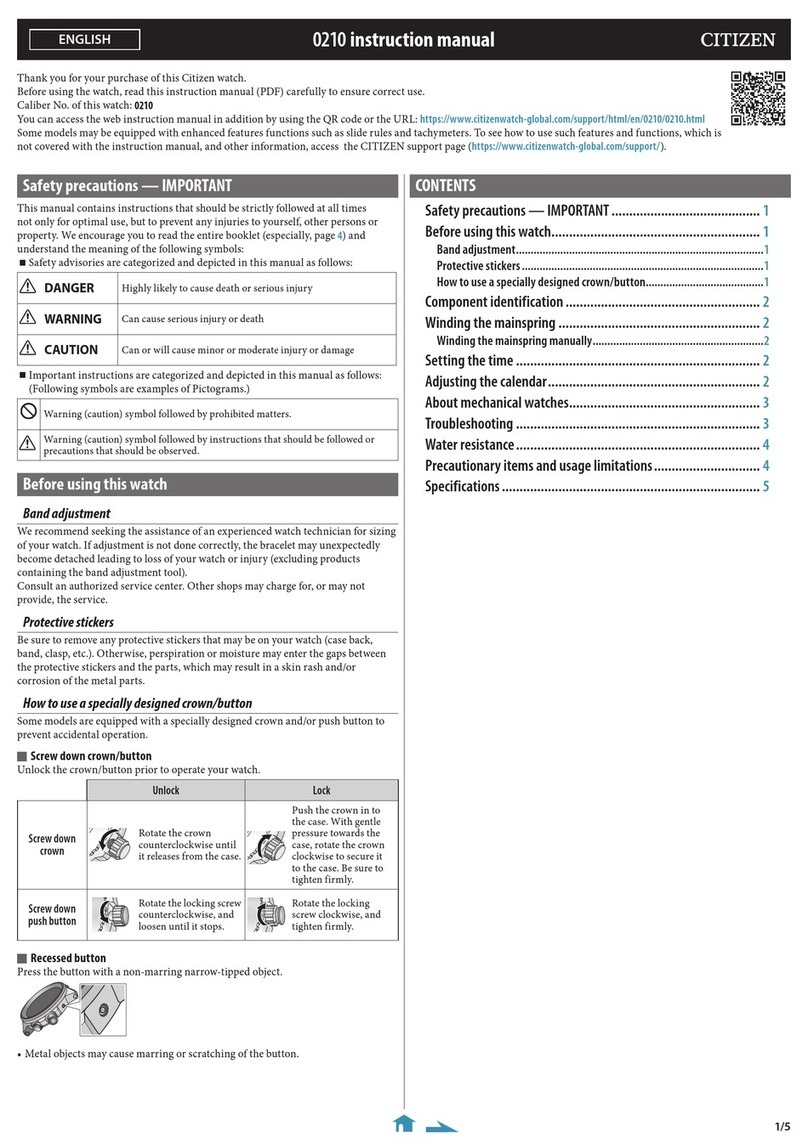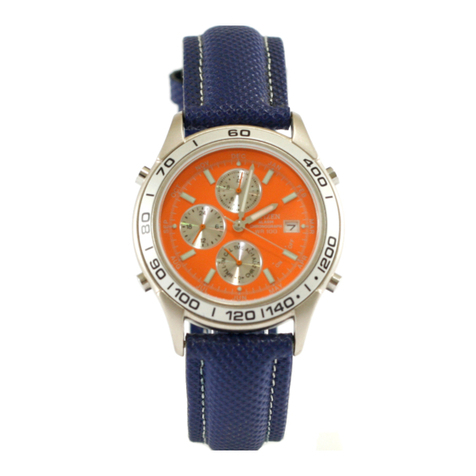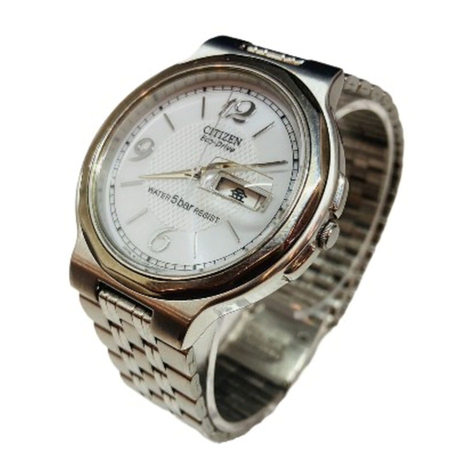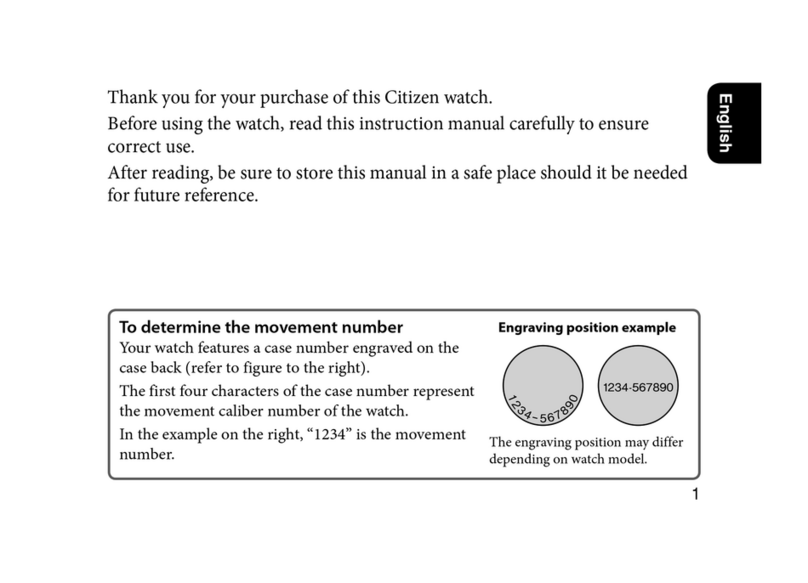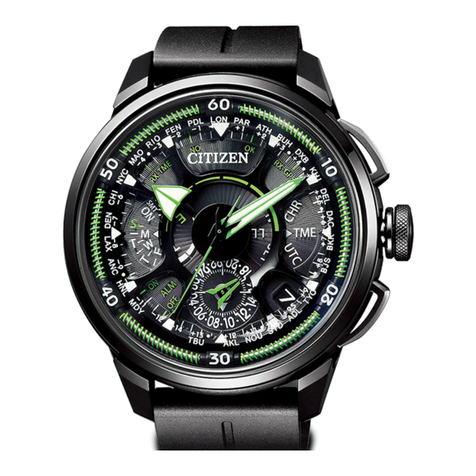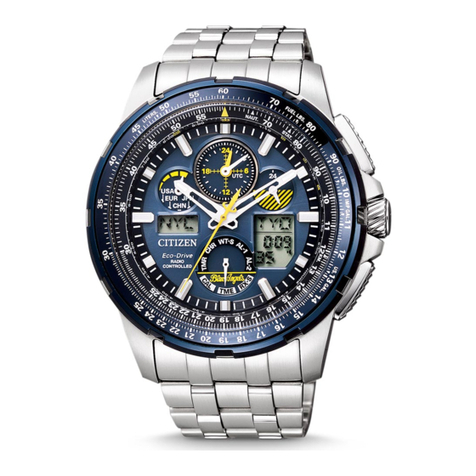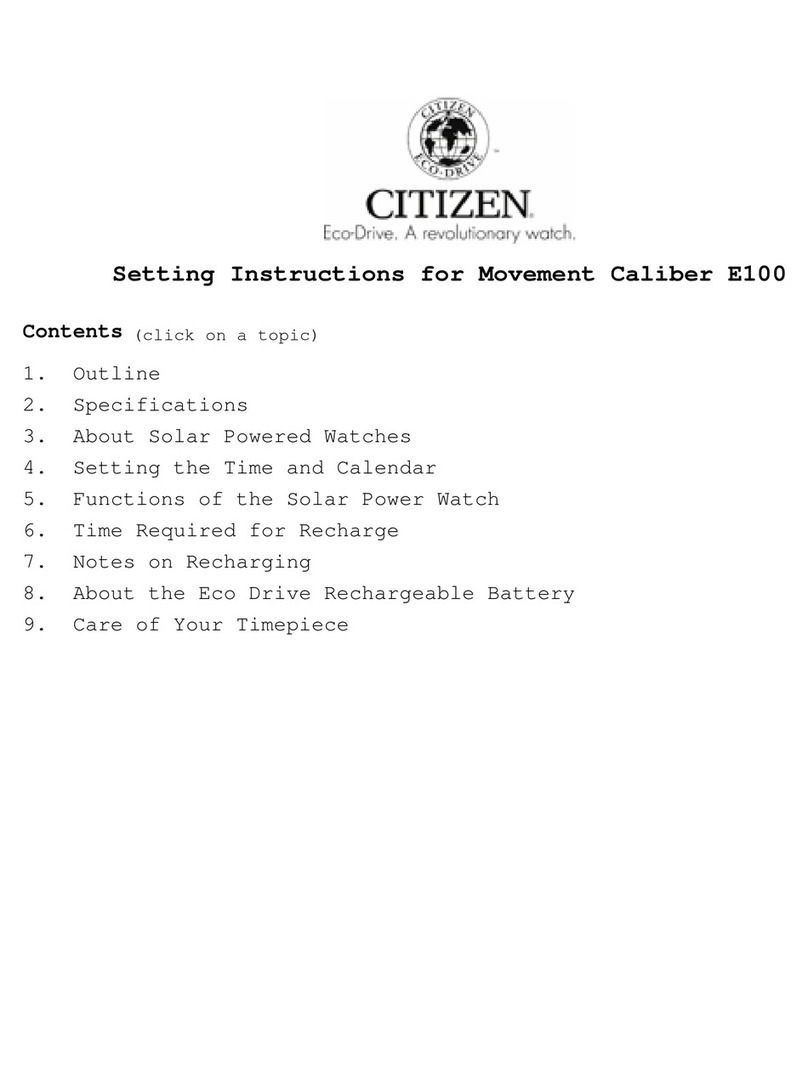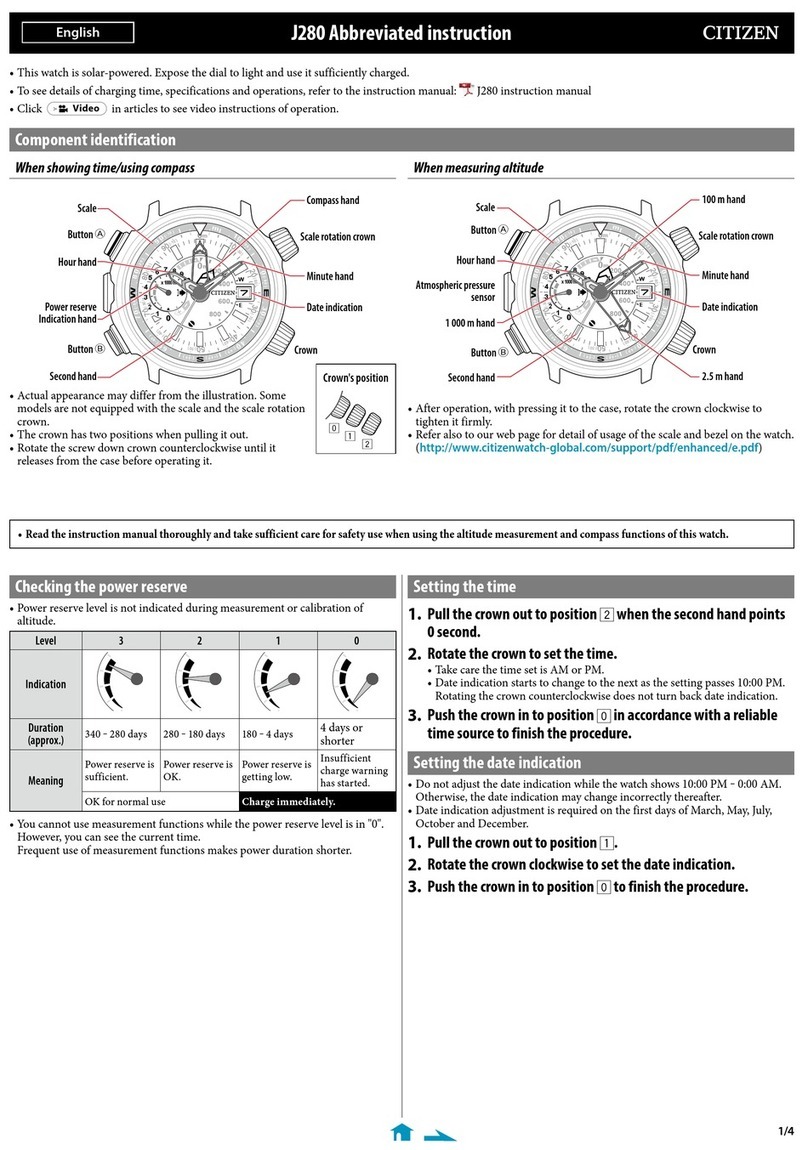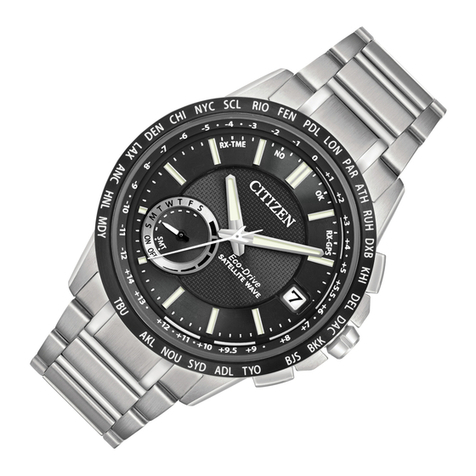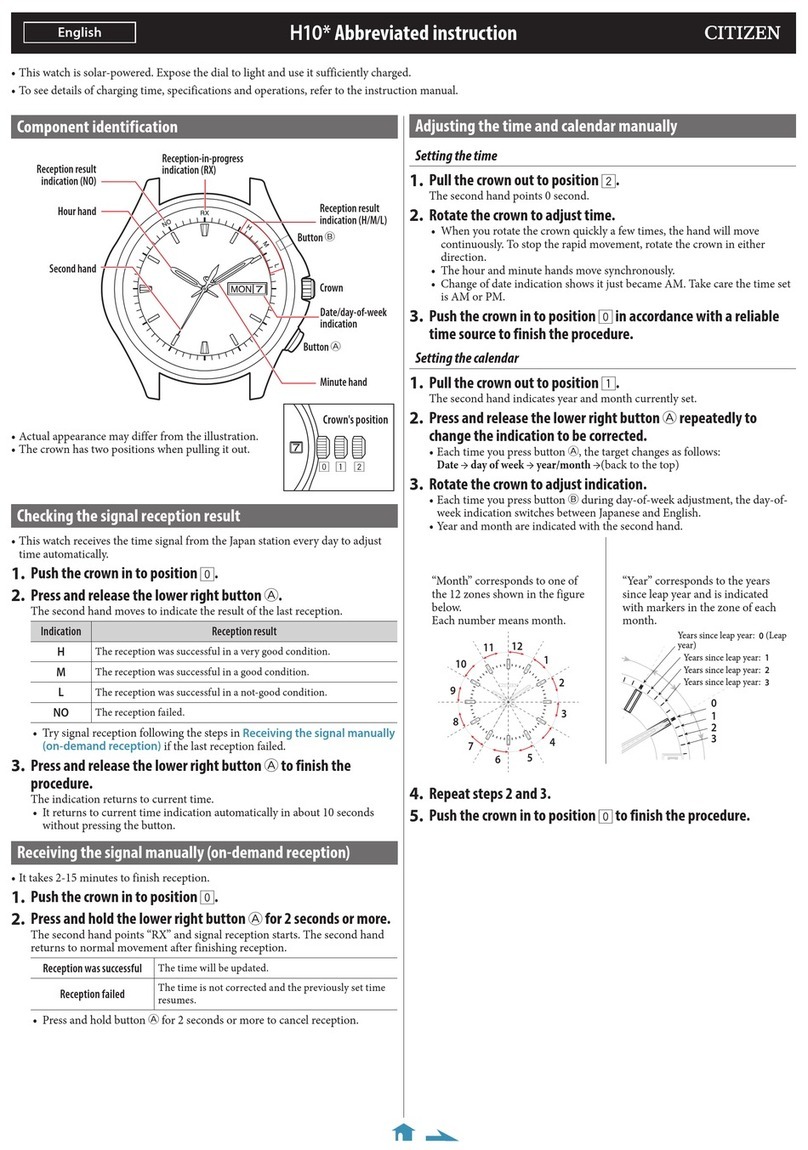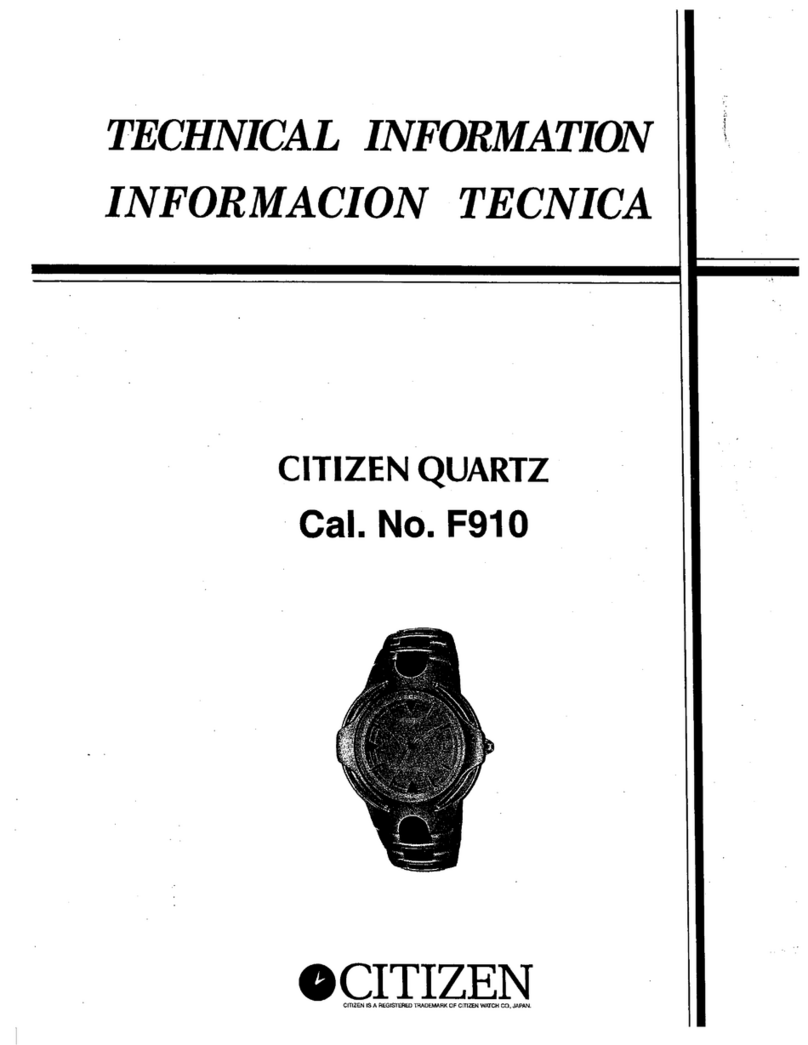CAUTION
• Be sure to use the watch with the crown pressed
in (normal position). If your watch has a screw-type
crown, be sure to tighten the crown completely.
• Do NOT operate the crown or button with wet
fingers or when the watch is wet. Water may enter
the watch and compromise the water-resistance.
• If the watch is used in seawater, rinse with fresh
water afterward and wipe with a dry cloth.
• If moisture has entered the watch, or if the inside
of the crystal is fogged up and does not become
clear within a day, immediately take the watch to
your dealer or Citizen Service Centre for repair.
Leaving the watch in such a state will allow
corrosion to form inside.
• If seawater enters the watch, place the watch in a
box or plastic bag and immediately take it in for
repair. Otherwise, pressure will increase, and parts
(crystal, buttons, etc.) may come off.
CAUTION: Keep your watch clean.
• Leaving dust and dirt deposited between the case
and crown may result in difficulty in pulling the
crown out.
• Dust and dirt tend to be deposited in gaps in the
back of the case or band. Deposited dust and dirt
may cause corrosion and soil your clothing. Clean
the watch occasionally.
Cleaning the Watch
• Use a soft cloth to wipe off dirt, perspiration and
water from the case and crystal.
• Use a soft, dry cloth to wipe perspiration and dirt
from leather band.
• To clean a metal, plastic, or rubber watch band,
wash away dirt with mild soap and water. Use a
soft brush to remove dust and dirt jammed in the
gaps in the metal band. If your watch is not water-
resistant, take it to your dealer.
NOTE: Avoid using solvents (thinner, benzine, etc.),
as they may mar the finish.
CAUTION: Operating Environment
• Use the watch within the operating-temperature
range specified in the instruction manual.
Using the watch where temperatures are outside
the specified range, may result in deterioration of
functions or even stoppage of the watch.
• Do NOT use the watch in a place where it is
exposed to high temperature, such as a sauna.
Doing so may result in a skin burn.
• Do NOT leave the watch in a place where it is
exposed to high temperature, such as the glove
compartment or dashboard of a car.
Doing so may result in deterioration of the watch,
such as deformation of plastic parts.
• Do NOT place the watch close to a magnet.
Timekeeping will become inaccurate if you place
the watch close to a magnetic health equipment
such as a magnetic necklace or a magnetic latch
of a refrigerator door or handbag clasp or the
earphone of a mobile phone. If this has occurred,
move the watch away from the magnet and reset
the time.
• Do NOT place the watch close to household
appliances that generate static electricity.
Timekeeping may become inaccurate if the watch
is exposed to strong static electricity, such as
emitted from a TV screen.
• Do NOT subject the watch to strong shocks such
as dropping it onto a hard floor.
• Avoid using the watch in an environment where it
may be exposed to chemicals or corrosive gases.
If solvents, such as thinner and benzine, or
substances containing such solvents, come in
contact with the watch, discolouration, melting,
cracking, etc., may result. If the watch comes in
contact with mercury used in thermometers, the
case, band or other parts may become discoloured.
10. Specifications
1. Caliber No.: E71
2. Type: Analogue Solar-Powered Watch
3. Accuracy: Within 15 seconds per month on
average
(When worn at normal temperatures of +5C to
+35C/41F to 95F)
4. Operating Temperature Range: -10C to
+60C/14F to 140F
5. Display functions:
•Time: Hours, Minutes, Seconds
• Calendar: Date display by date plate (with quick
adjustment feature)
Years passed and month display by
second hand (Years passed and
month are displayed only during
calendar adjustment.)
6. Additional Functions:
• Power Save Feature
• Time Difference Correction Feature
(forward and reverse adjustment in hours)
• Insufficient Recharging Warning Feature
• Time Setting Warning Feature
• Calendar Setting Warning Feature
• Overcharging Prevention Feature
7. Continuous Operating Time:
• Fully charged to stopping:
Approx 10 months (while in operation of
power save feature)
• 2-second interval movement to stopping:
Approx 2 days
8. Battery Used: Secondary battery
*Specifications are subject to change without notice.

